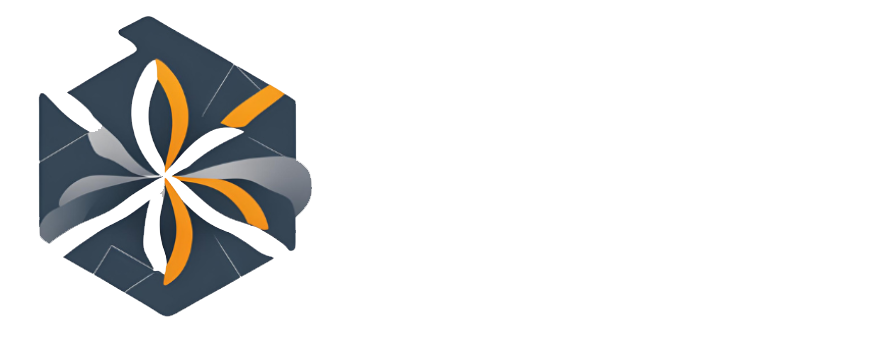
Running a successful business is more than just generating revenue. While it’s easy to focus on sales and marketing, inefficient operations could be silently draining your resources, eating away at your profits, and increasing stress levels. The truth is, many of these inefficiencies remain hidden until they snowball into much bigger problems. But it doesn’t have to be that way.
In this post, we’ll break down the hidden costs of inefficient operations, how to recognize them, and, most importantly, how to fix them.
1. The Cost of Manual Processess
One of the most common inefficiencies is relying too heavily on manual processes. Whether it’s handling invoices by hand, manually updating customer databases, or tracking project progress on spreadsheets, these tasks are time-consuming, prone to error, and costly in the long run.
Real-Life Example:
A small e-commerce business I worked with used to manually send out their order confirmation emails and track their inventory. Not only did this slow down their order processing time, but mistakes in tracking inventory also led to overselling, costing them thousands in refunds and customer dissatisfaction. When we automated their email flows and inventory management through Klaviyo and a synced CRM system, their processing times sped up by 50%, and errors were drastically reduced.
Actionable Takeaway:
Look for areas in your business where repetitive tasks are done manually. Tools like Zapier, Klaviyo, and ActiveCampaign can automate everything from emails to task assignments. The upfront investment in automation pays off in saved time, fewer errors, and happier customers.
2. The Lack of System and Processes
Many businesses operate without clear, documented processes. This leads to confusion among team members, inconsistent work quality, and wasted time. When processes are not standardized, each task becomes a guessing game, and mistakes are inevitable.
Real-Life Example:
A client in the consulting industry was dealing with constant miscommunication within their team. Without proper documentation of their procedures, onboarding new employees was a nightmare, and projects often took longer than necessary. We implemented Standard Operating Procedures (SOPs) for every key task in the business—from client onboarding to project completion. Within weeks, new hires were onboarded 30% faster, and project timelines became more predictable.
Actionable Takeaway:
Start by creating SOPs for your most critical business processes. Not sure where to start? Break down tasks like onboarding, customer service, or project management into clear steps that anyone in your team can follow. Tools like Google Docs or project management platforms like Asana can help document and track these procedures.
3. Unclear Team Roles and Responsibilities
When roles and responsibilities aren’t clearly defined, it leads to duplicated efforts or, worse, neglected tasks. Team members end up guessing what they should be doing, and without clear accountability, things start to slip through the cracks.
Actionable Takeaway:
To avoid this, make sure each team member has a clearly defined role with documented responsibilities. Regular team meetings can also ensure everyone is on the same page. Create a responsibility matrix (e.g., a RACI chart) to track who is responsible, accountable, consulted, and informed for each task. This will eliminate confusion and increase accountability across your team.

4. Missed Opportunities with Data and Metrics
Many business owners fail to measure the right operational metrics, missing out on crucial insights that could save them time and money. Metrics help you understand where your bottlenecks are and which processes are causing the most problems.
Actionable Takeaway:
Start tracking key performance indicators (KPIs) like:
- Time spent on tasks
- Project completion rates
- Customer acquisition costs
- Lead-to-customer conversion rates By understanding these metrics, you can identify inefficiencies and make data-driven decisions to improve your operations. Tools like HubSpot, Monday.com, or even Google Analytics can provide valuable insights into your operational efficiency.

5. How to Conduct an Operational Audit
Figure out where your inefficiencies lie? An operational audit is a powerful tool to assess your current systems and find areas for improvement. Think of it as a health check for your business.
Step-by-Step Guide to Conducting an Operational Audit:
- Identify Key Areas: Look at areas like customer service, marketing, team collaboration, project management, and financial tracking.
- Gather Feedback: Talk to your team about their pain points—where do they feel most overwhelmed or inefficient?
- Track Time: Use time-tracking tools like Toggl to monitor how long tasks take and where time is wasted.
- Evaluate Technology: Are there tools or platforms that could be integrated to automate tasks or make processes more efficient?
- Create an Action Plan: Once you’ve identified the bottlenecks, prioritize what needs fixing first and create a step-by-step plan to address each issue.
Bonus Tip:
Conducting an audit on your own can feel overwhelming. If you need guidance, a service like the Strategic Efficiency Intensive can provide a deep-dive session to pinpoint your inefficiencies and create a custom action plan.
Conclusion: Stop Letting Hidden Costs Hold Your Business Back
Operational inefficiencies may not seem like a big deal at first, but over time, they can add up and significantly impact your bottom line. The good news is that these issues are fixable! By automating manual tasks, standardizing processes, clarifying roles, and tracking the right metrics, you can streamline your operations and unlock the full potential of your business.
If you’re ready to take the next step, consider booking a 90 Day Business Roadmap consultation. Together, we can uncover hidden inefficiencies and develop a strategic plan to transform your operations, save time, and maximize growth.
